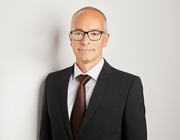The world is at a crossroads. Climate change is threatening our environment, our livelihoods and ultimately our future. We have the power, however, to set the course for a more sustainable future. The COP28 conference offered us the opportunity to take this decisive step in the right direction.
Climate change is no longer an abstract threat, but a reality that is manifesting in the form of extreme weather events, rising temperatures and dwindling resources. The earth is virtually crying out for help and we can no longer stand idly by. The COP28 conference is a one-time opportunity to bring the global community together to discuss concrete steps that can protect our planet.
We must fight climate change by drastically reducing greenhouse gas emissions. This requires a change in energy production, the promotion of renewable energies and an increase in energy efficiency. It also requires support for sustainable agriculture and the preservation of forests that serve as carbon sinks. Last but not least, technology and innovation in companies have a central role to play. Avoiding all greenhouse gas emissions and extracting them from the atmosphere with the help of modern technology must become an indispensable part of any climate protection efforts.
However, climate protection without more sustainability in our way of life and production will not lead to success if we do not take into account the fundamental framework conditions within which both take place. The global community must actively work to protect biodiversity and conserve the oceans. The loss of biodiversity is alarming and the health of the oceans is critical to the balance of our planet. We also need to rethink our lifestyles - especially in the northern hemisphere - and make more sustainable choices. This includes reducing plastic consumption, promoting public transportation, supporting local producers and using resources consciously.
Climate change is not only a threat, but also an opportunity. An opportunity to reshape our societies, advance environmentally friendly technologies and create green jobs. We can build a sustainable economy – one based on acting responsibly.





















